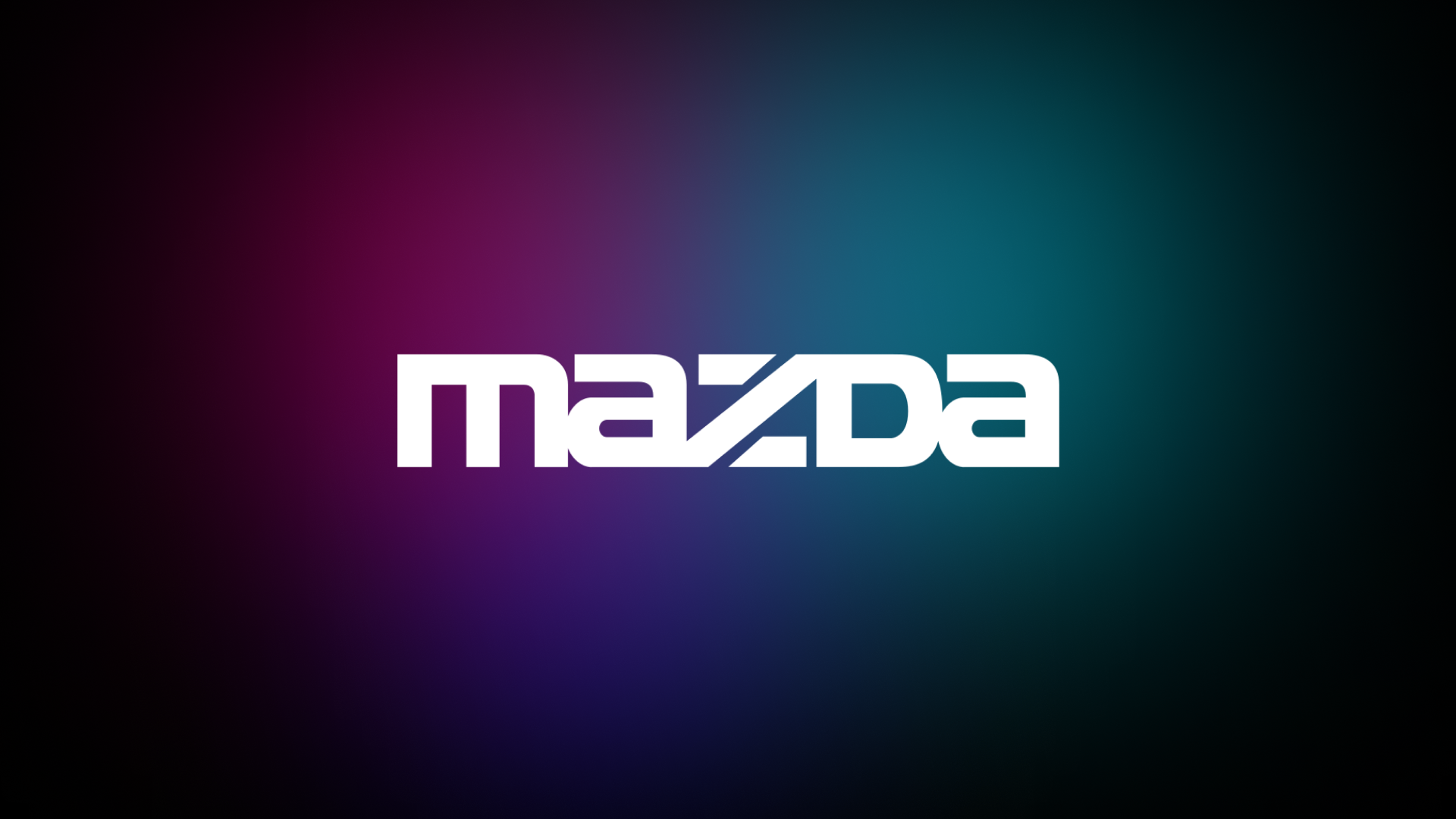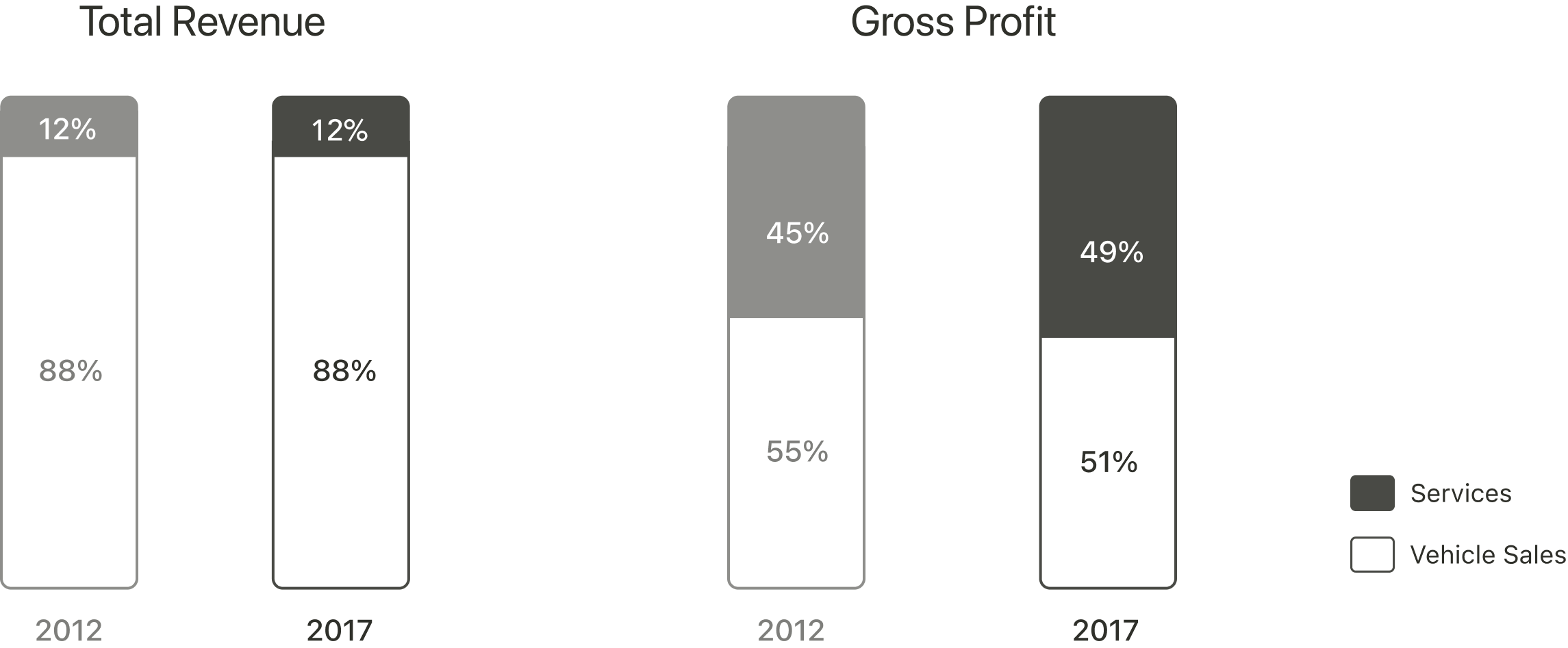

Mazda dealerships rely on their service departments for nearly half of their revenue, yet most new Mazda owners never return after purchasing their car. Through this project, our team set out to reimagine the MyMazda app’s service experience, making dealership visits easier to book, more transparent to follow, and more trustworthy overall.
I designed a cohesive service experience within the MyMazda app, creating a clear visual system grounded in Material Design principles. I built interactive prototypes, crafted accessible UI flows for booking, in-app payment, and service updates, and wrote microcopy to ensure transparency and trust.
5 weeks
Mazda dealerships depend heavily on service revenue, with nearly 50% of their income coming from the service department. This makes long-term customer retention critical to dealership success.

Cox Automotive 2018 Service Industry Study
Our research uncovered three consistent barriers driving this disconnect:
Our redesign lived inside the existing MyMazda app, ensuring continuity with the brand’s established digital experience. Rather than reinventing a new platform, we focused on enhancing the service journey where it mattered most: booking, in-service transparency, and checkout.
By building within Mazda’s ecosystem, the solution was immediately feasible for deployment and aligned with their broader customer touchpoints.

Currently, Mazda owners manage service through a patchwork of touchpoints, some inside the MyMazda app, others through third-party tools or direct phone calls to dealerships. This fragmentation creates friction, mistrust, and drop-off.
Our redesign brings all service touchpoints in-house, consolidating booking, updates, approvals, and payment into one seamless experience within the MyMazda app.

In our version of the MyMazda application, we considered the needs of both the business and the end user equally. Our app builds off the foundation of the current interface, adding in-house experiences that instil a thoughtful connection between Mazda and its customers.

In the service tab, we focused on increasing transparency to the owner by communicating why they need a maintenance service, when they need it, and what each service includes. Additionally, we kept the booking process within the app to remove booking friction thereby increasing the number of owners who follow through with the appointment.


In this touchpoint, we considered how we could establish a trustworthy connection between the owner and the service team. After visiting a Mazda dealership, we learnt that providing step-by-step updates throughout the service is not feasible for technicians but, we can update owners on when a service is starting and ending. We implemented this action to accommodate busy schedules to mitigate owner frustration and anxiety.


During the pandemic, Mazda piloted a service that provided video repair recommendations. Using a 3rd party service, "covideo", staff members filmed each vehicle and the repairs that they would be performing. This pilot sped up their total service time but was ultimately discarded due to cost. We recommend Mazda take this service in-house to provide transparency and facilitate digital decision-making to help owners make choices based on knowledge rather than social pressure.


To provide a seamless experience, we pulled the payment experience inside the application. We did this to strengthen the brand perception and provide a thoughtful end-of-service experience.


In the history tab, we created an in-app reference point for owners to view past services. Here, we considered when an owner is ready to sell their vehicle and wants to communicate that it was well-cared for. Additionally, this feature introduces new owners to the benefits of the MyMazda application, instilling an already established value proposition to a new owner.


We built the experience on Google’s Material Design principles, ensuring consistency across spacing, typography, and elevations. The clean visual language supported clarity and made complex information digestible.
Screens were designed for both usability and credibility, leveraging hierarchy, contrast, and micro-interactions to guide attention and build trust.

This project, though not launched, demonstrated the measurable potential of a redesigned service flow:
By grounding every design choice in research and user feedback, our team showed how a traditionally opaque industry could become more transparent and customer-friendly.
Working on this project reinforced the importance of designing not just for convenience, but for credibility. Transparency in service-based industries can make the difference between churn and loyalty.
I also learned the value of considering every stakeholder. From the customer to the dealership to the technicians who would implement these updates. Balancing user needs with business goals shaped every decision we made.
This project demonstrated how thoughtful UX design can transform a frustrating experience into one that builds trust and drives business value. If executed, Mazda could position itself as an industry leader not just in cars, but in customer care.